Asus A8R32-MVP Deluxe: First ATI RD580
by Wesley Fink on March 1, 2006 9:00 AM EST- Posted in
- Motherboards
Asus A8R32-MVP: Board Layout
Since the A8R32-SLI Deluxe is an upgrade to the current A8R-MVP, the best way to compare the two boards is to take a closer look at what has changed in the upgrade.
The only other layout change of any significance involves the PCIe slots. Asus has spread the 2 PCIe slots to a distance of 2 slots between the two x16 slots. This allows better video card cooling. It also requires a slight rearrangement of the available slots, but the total slots - 2 x16 PCIe, 1 x1 PCIe, and 2 PCI - remains the same.
If you look closely, you will see that the RD580 does not need a supplementary 4-pin Molex connection like the earlier 480, and that connector has been removed from the A8R32-MVP. We had no problems with stability of 2 video cards, even with dual X1900XT video cards, so the extra power connection is not necessary for stable dual video on the A8R32-MVP.
The rest of the updates to the A8R32-MVP Deluxe are not so obvious at first look.
The ALC882 has superb specifications, providing five 24-bit stereo DACs and three 20-bit stereo DACs driving the multimedia features. All DACs provide sample rates to 192kHz and up to 4 channels of microphone input are supported. Signal-to-Noise ratio is specified to be greater than 103dB. Realtek features the ALC882 as a premium HD part.
Another addition that justifies the Asus move of the A8R32-MVP to the Deluxe moniker is the addition of a second Gigabit LAN. Where the A8R has just the slower PCI Gigabit Ethernet, the A8R32 adds a second full-speed Gigabit LAN on the PCIe bus. This will be an important addition for some buyers.
The refinements to the A8R32-MVP Deluxe layout are subtle, but they improve on the already excellent design of the A8R-MVP. Asus has a reputation for paying attention to details in their board layouts, and they do not disappoint with the A8R32-MVP.
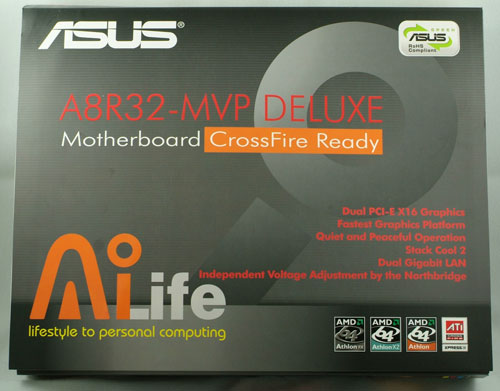
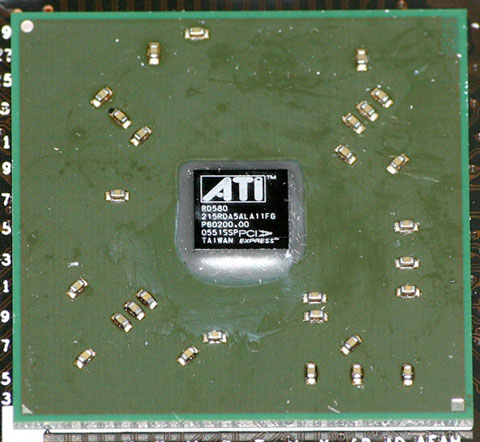

Since the A8R32-SLI Deluxe is an upgrade to the current A8R-MVP, the best way to compare the two boards is to take a closer look at what has changed in the upgrade.
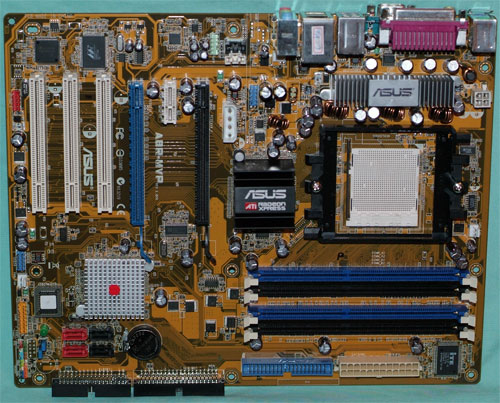
The only other layout change of any significance involves the PCIe slots. Asus has spread the 2 PCIe slots to a distance of 2 slots between the two x16 slots. This allows better video card cooling. It also requires a slight rearrangement of the available slots, but the total slots - 2 x16 PCIe, 1 x1 PCIe, and 2 PCI - remains the same.
If you look closely, you will see that the RD580 does not need a supplementary 4-pin Molex connection like the earlier 480, and that connector has been removed from the A8R32-MVP. We had no problems with stability of 2 video cards, even with dual X1900XT video cards, so the extra power connection is not necessary for stable dual video on the A8R32-MVP.
The rest of the updates to the A8R32-MVP Deluxe are not so obvious at first look.
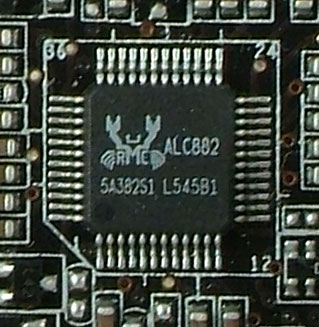
The ALC882 has superb specifications, providing five 24-bit stereo DACs and three 20-bit stereo DACs driving the multimedia features. All DACs provide sample rates to 192kHz and up to 4 channels of microphone input are supported. Signal-to-Noise ratio is specified to be greater than 103dB. Realtek features the ALC882 as a premium HD part.
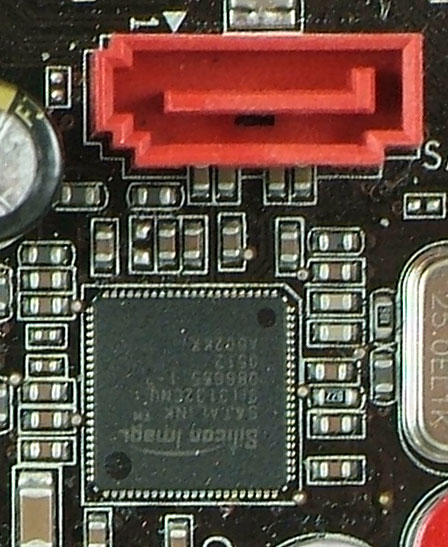
Another addition that justifies the Asus move of the A8R32-MVP to the Deluxe moniker is the addition of a second Gigabit LAN. Where the A8R has just the slower PCI Gigabit Ethernet, the A8R32 adds a second full-speed Gigabit LAN on the PCIe bus. This will be an important addition for some buyers.

The refinements to the A8R32-MVP Deluxe layout are subtle, but they improve on the already excellent design of the A8R-MVP. Asus has a reputation for paying attention to details in their board layouts, and they do not disappoint with the A8R32-MVP.


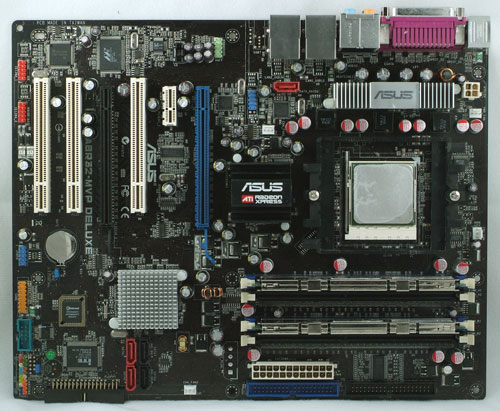








65 Comments
View All Comments
BPB - Friday, February 17, 2006 - link
This doesn't make sense: "there will never be another Asus product purchased by our company". Why would a business care about overclocking? A business should care about STABILITY.DigitalFreak - Friday, February 17, 2006 - link
They should have moved the only PCI-E 1x slot to the left. They way it is now, you lose that slot when using a dual slot cooler in the PCI-E 16x slot closest to the processor. Hopefully that will be changed on the AM2 version of the board.aguilpa1 - Friday, February 17, 2006 - link
a 7800 and 1900 this way we can better gauge the mean performance of the "board" with identical comparison to other previously tested boards because not everyone is going to run out and get a $600 1900 ATI just for this board.Wesley Fink - Friday, February 17, 2006 - link
We DID test the A8R32-MVP with both the X1900XT and the 7800GTX. If you closely at the standard gaming performance graphs on p.9 you will see the orange bars are the A8R32-MVP test eith the X1900XT and the green bars are the same A8R32-MVP tests with the 7800GTX. The other board results are with the 7800GTX so if you compare the green bar to all the blue bars you are comparing 7800GTX performance on ATI and nVidia. In addition, all the bars are labeled with the test board and test video card to prevent confusion.This is explained in Test Setup on p.6, and in my comment above, "We reported both results so you could compare 7800GTX performance to the previous boards also tested with the 7800GTX. Since the X1900XT is the latest and fastest video card the results were included for Reference only. As someone else pointed out, when testing Dual X16 Video you have to run SLI on nVidia and Crossfire on ATI (or Intel)."
aguilpa1 - Friday, February 17, 2006 - link
never mind, I see someone asked the same question, but were not given a reasonable answer anywaysBPB - Friday, February 17, 2006 - link
This is exciting news. But I plan on getting the X1900 AIW, which won't do Crossfire. So, when are we going to see non-Crossfire (Xpress 200-type) versions of this chipset? In the end I may get this board, but I'm hoping I can save a few bucks by getting one without the added cost of Crossfire.Wesley Fink - Wednesday, March 1, 2006 - link
RD580 is only available as the dual x16 version. With both x16 lanes off the north bridge you can't really leave out a chip, as you can in the nVidia version right now, and lower the price. The single X16 slot and dual x8 Crossfire will be provided by RD480.n7 - Friday, February 17, 2006 - link
Looks like a superb motherboard for the price!Zebo - Friday, February 17, 2006 - link
Look perfect to me. Black, high clocker, built like a tank and relativly inexpensive. I wish they had this two months ago - U seen my DFI chipset mod what a PITA to get silent chipset sitting right under card.:( Not only is ATI chispet seemingly cooler leaving us with passive solutions they clock at least as well if not better.Zebo - Friday, February 17, 2006 - link
Also the gap between PCIe cards is perfect to run water blocks too and well as nV/ATI silencers w/o touching or being cramped..